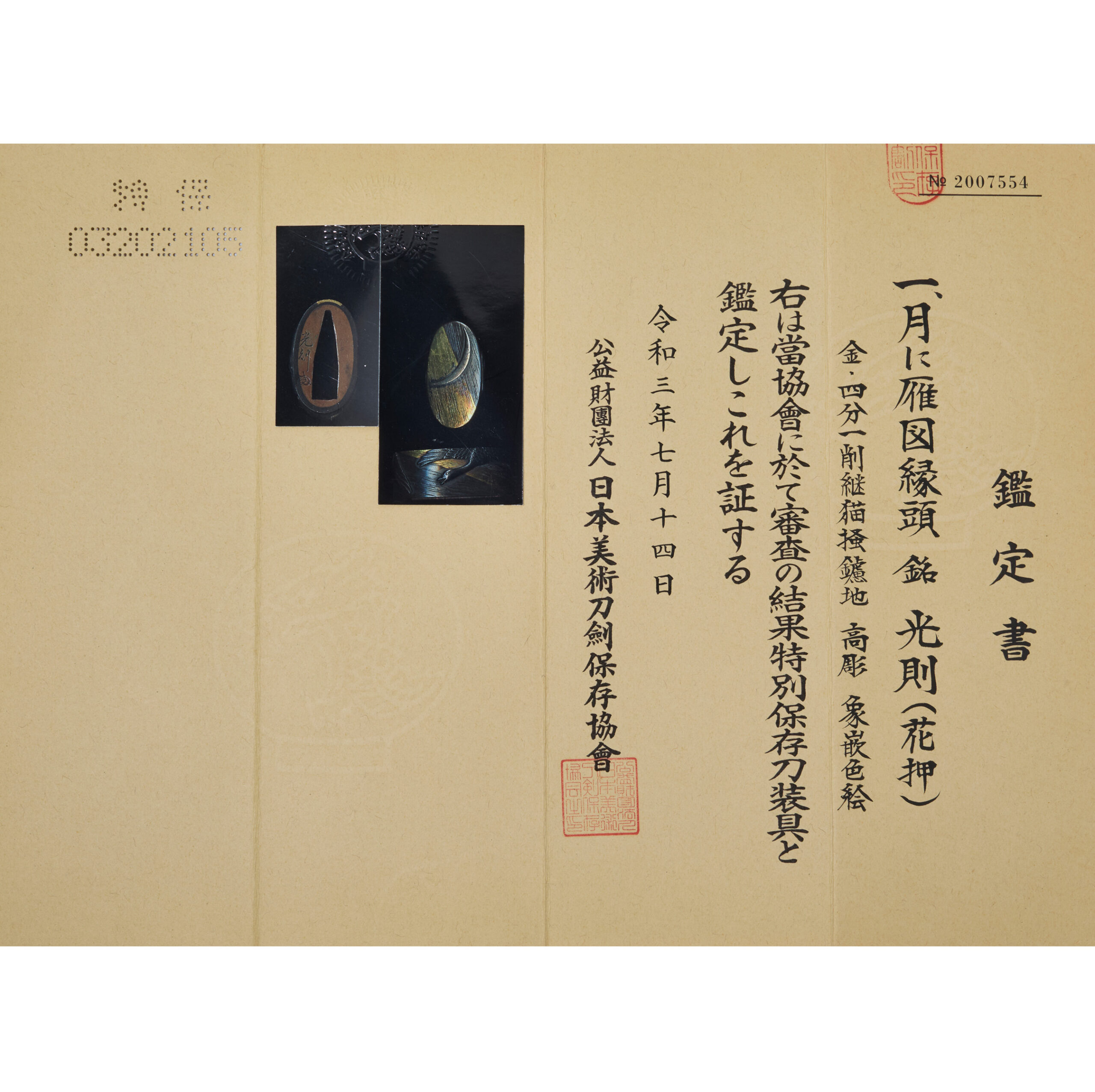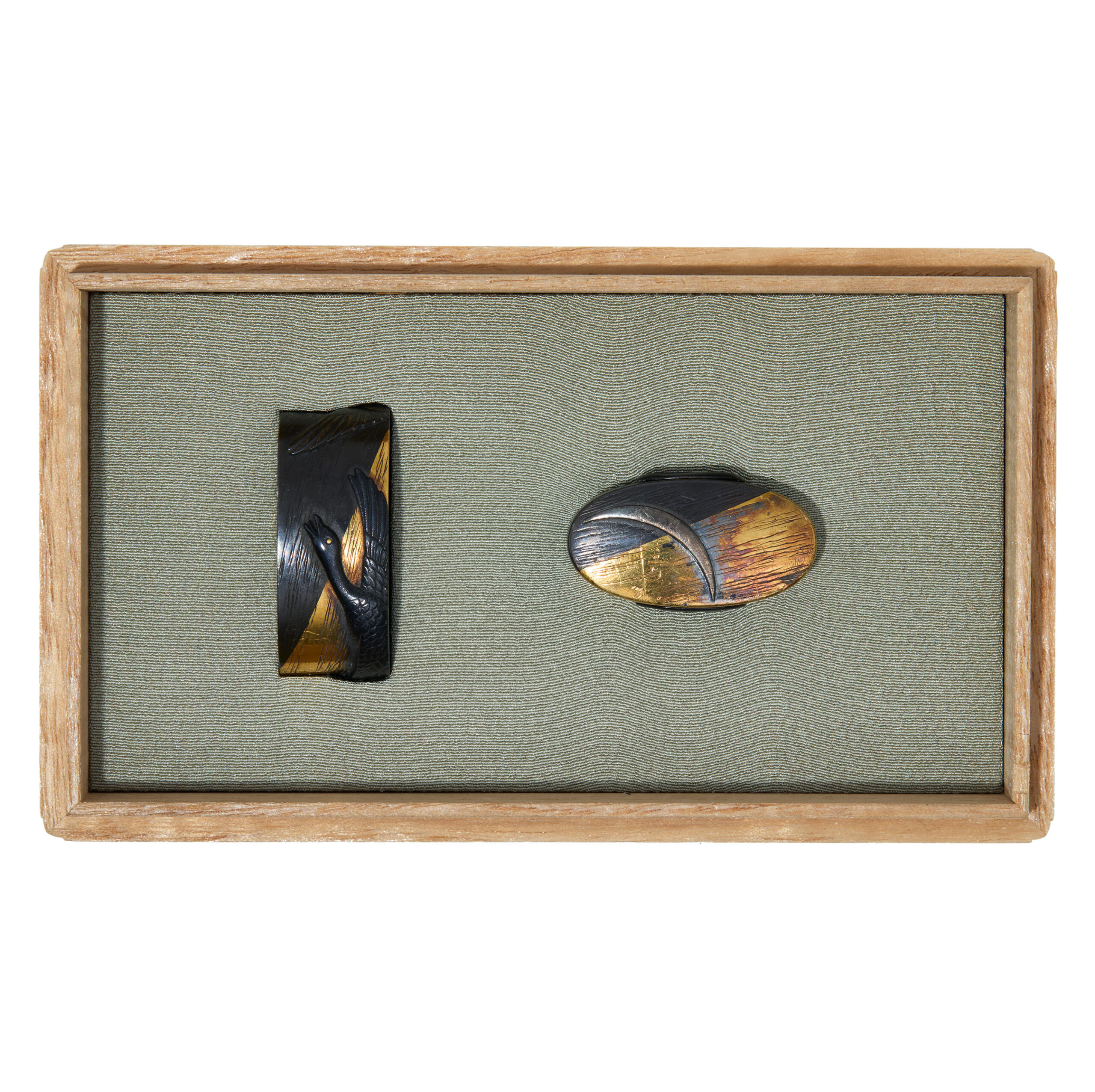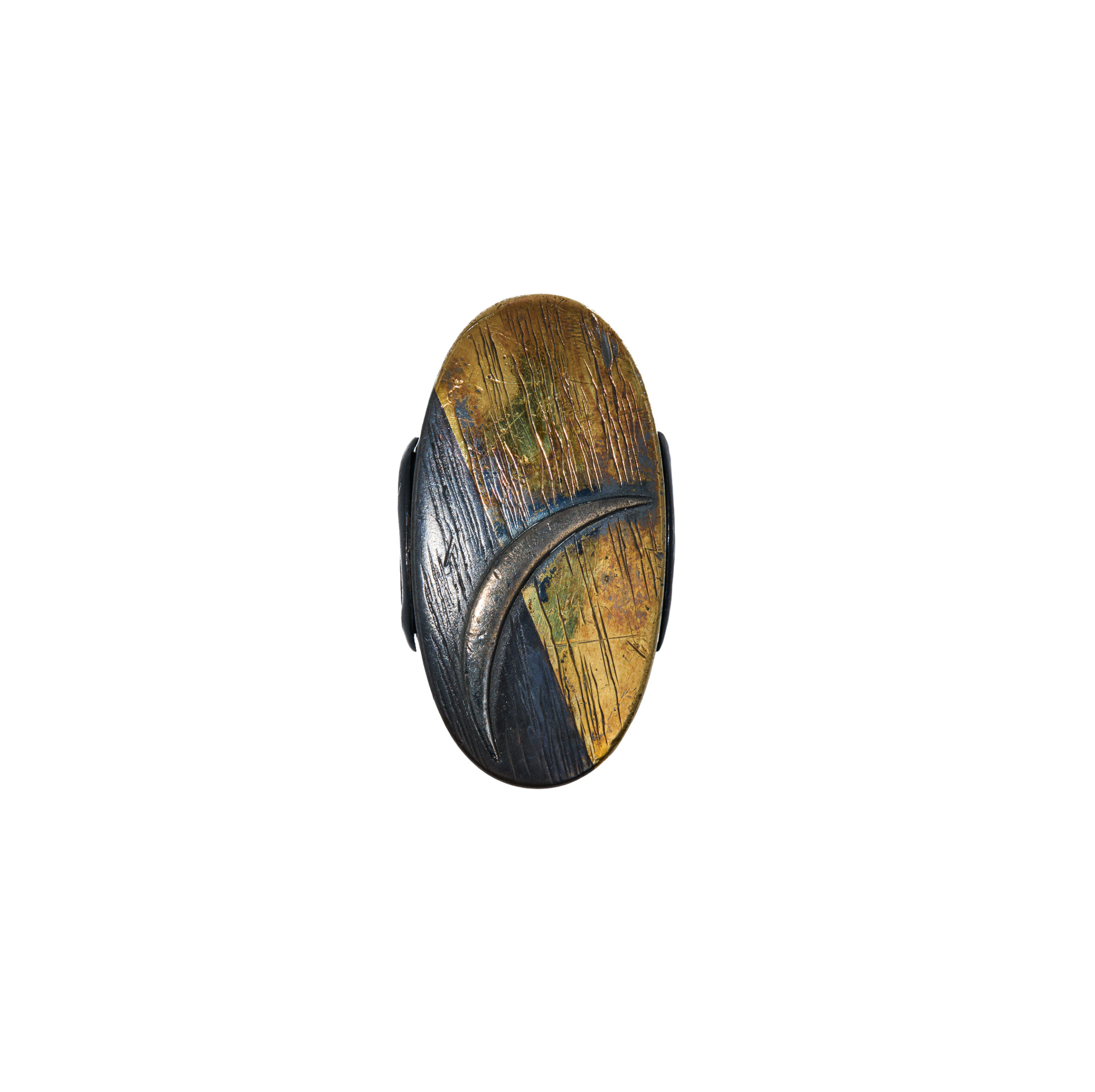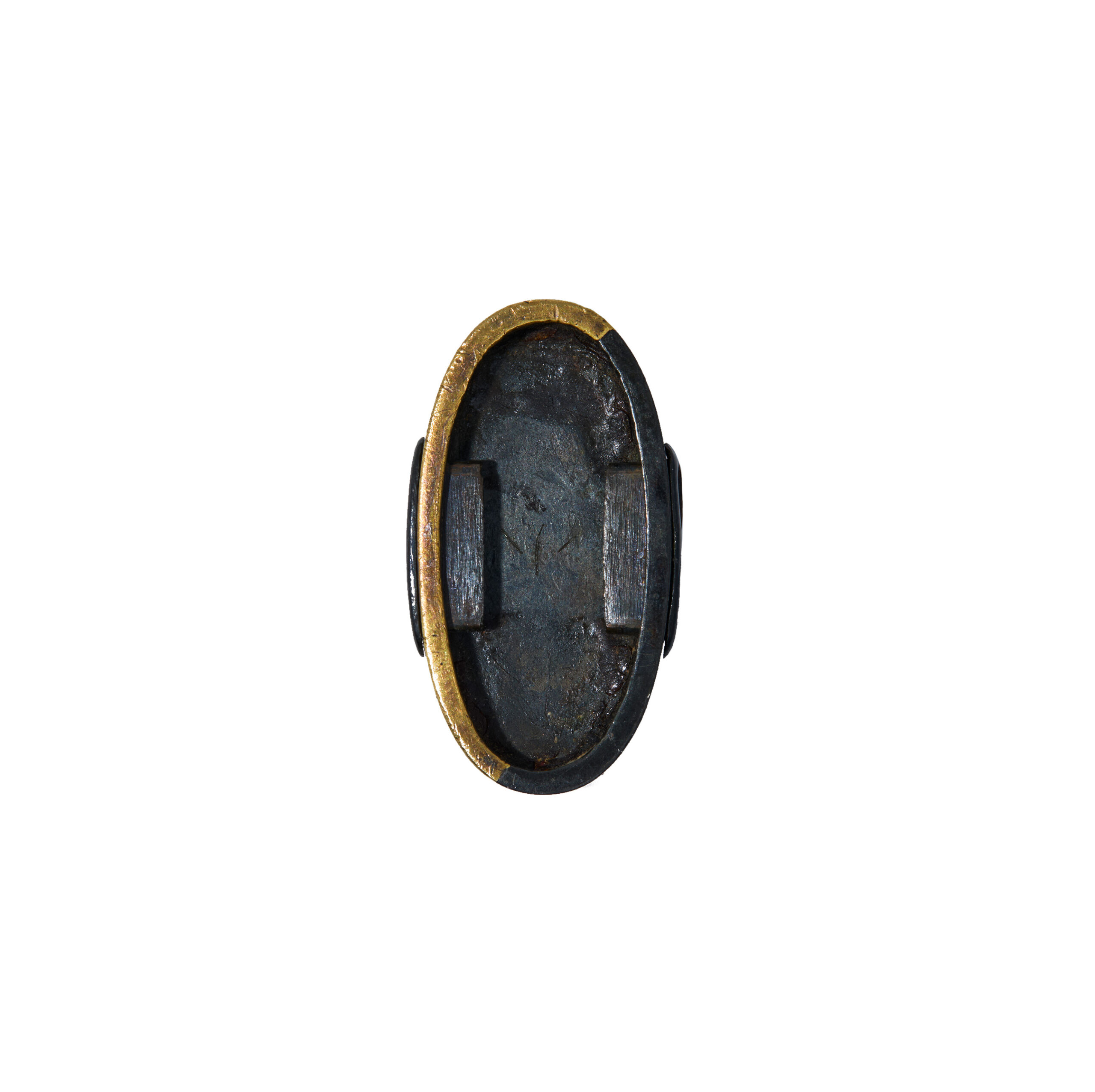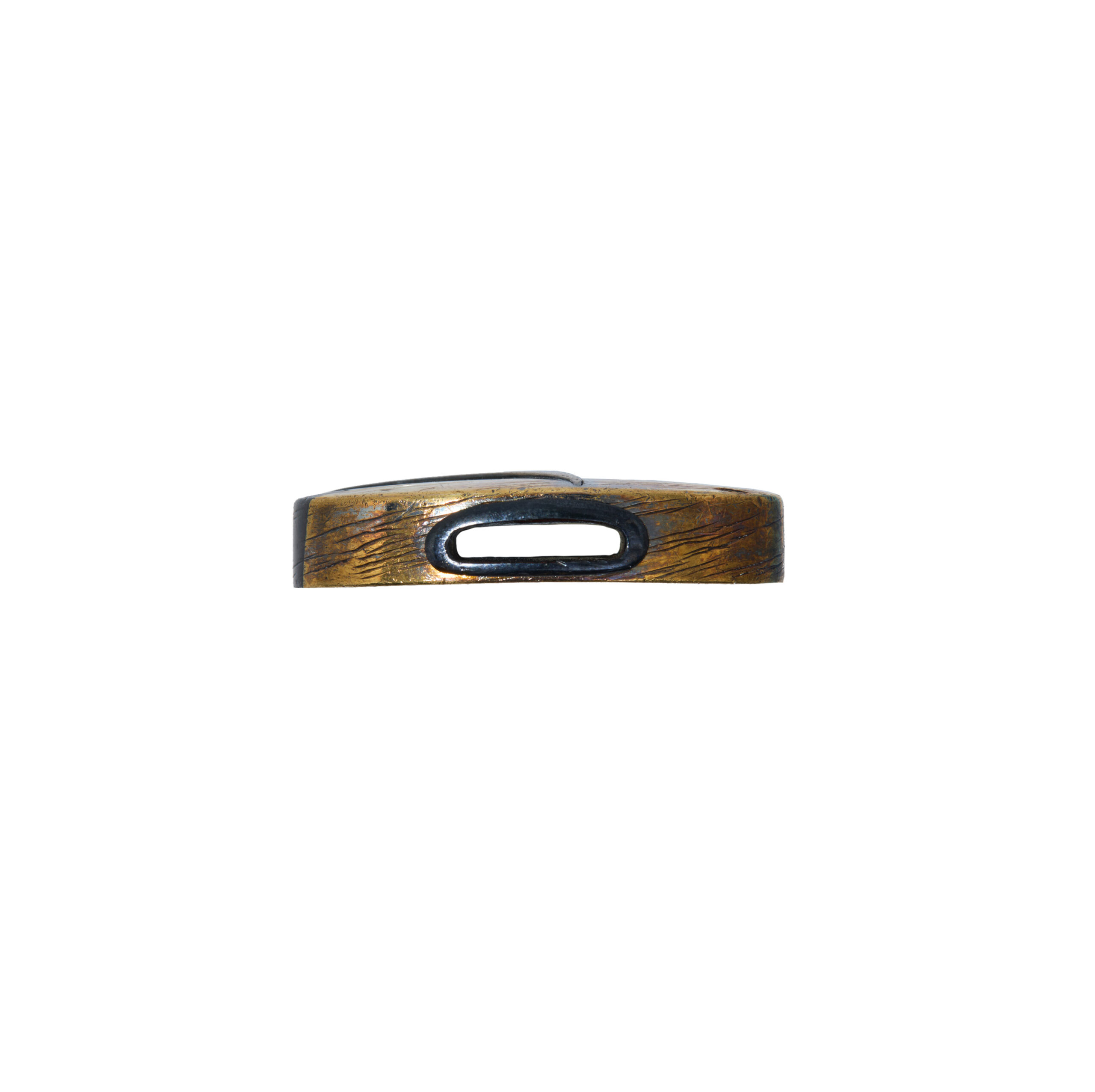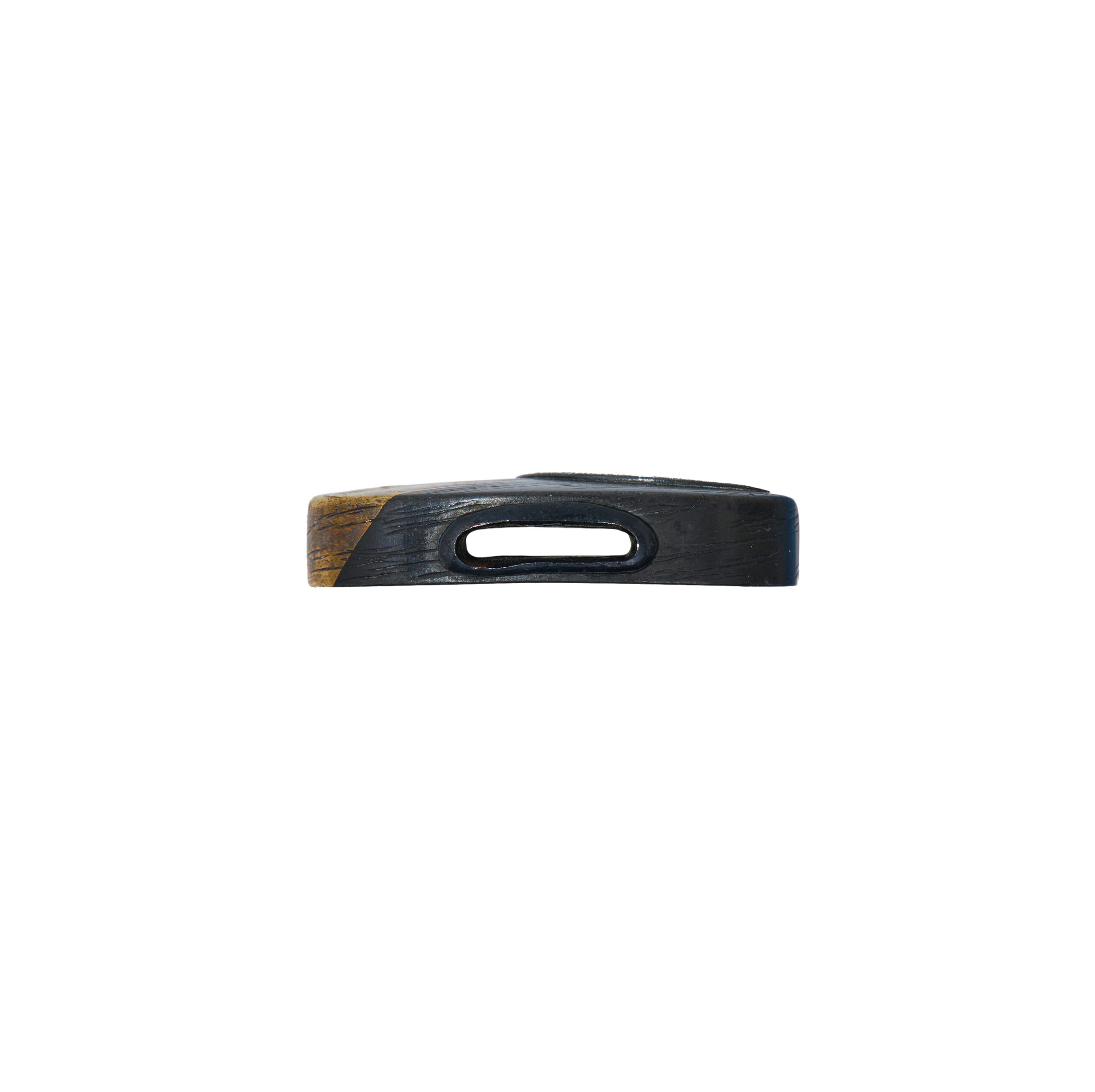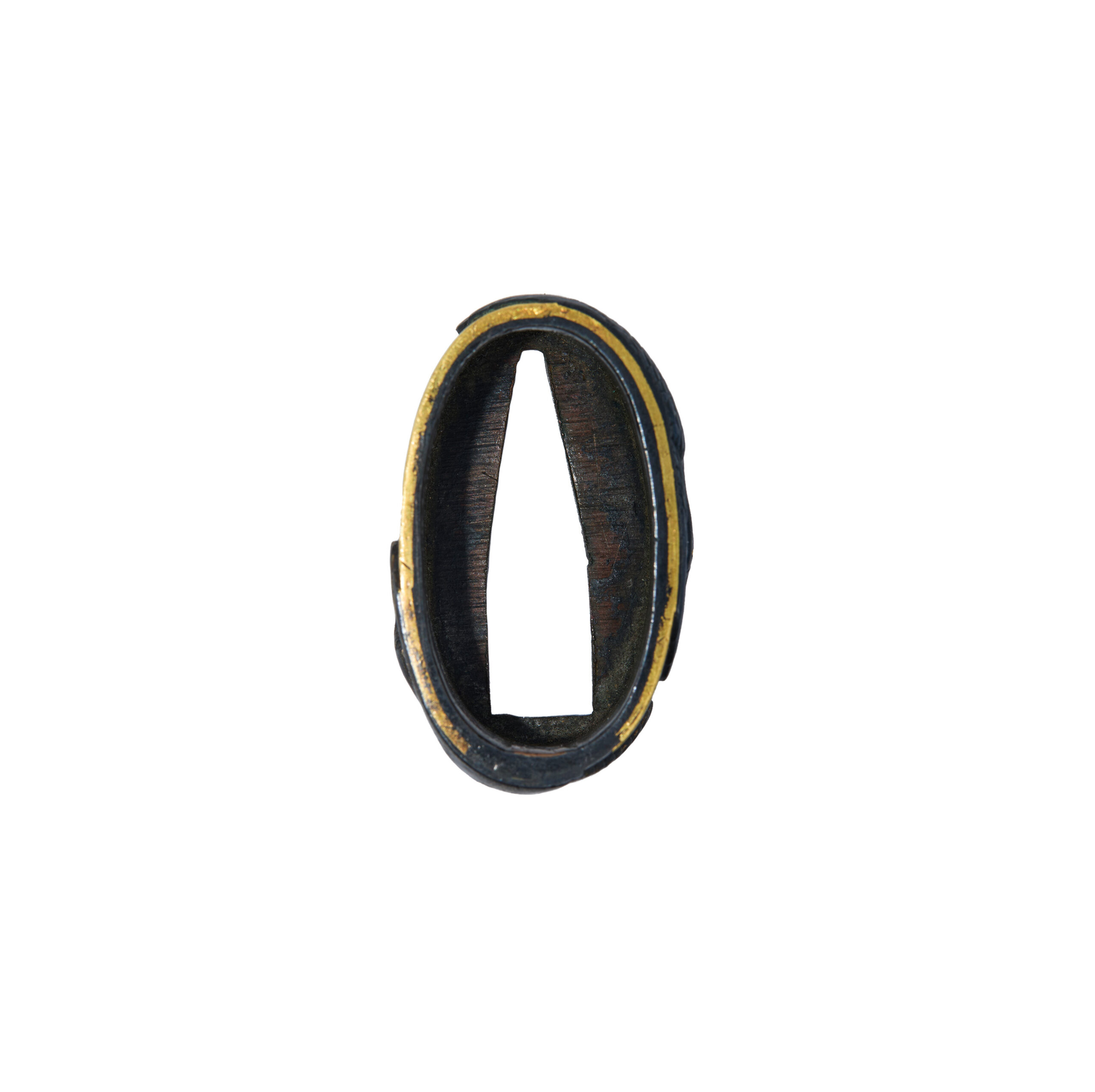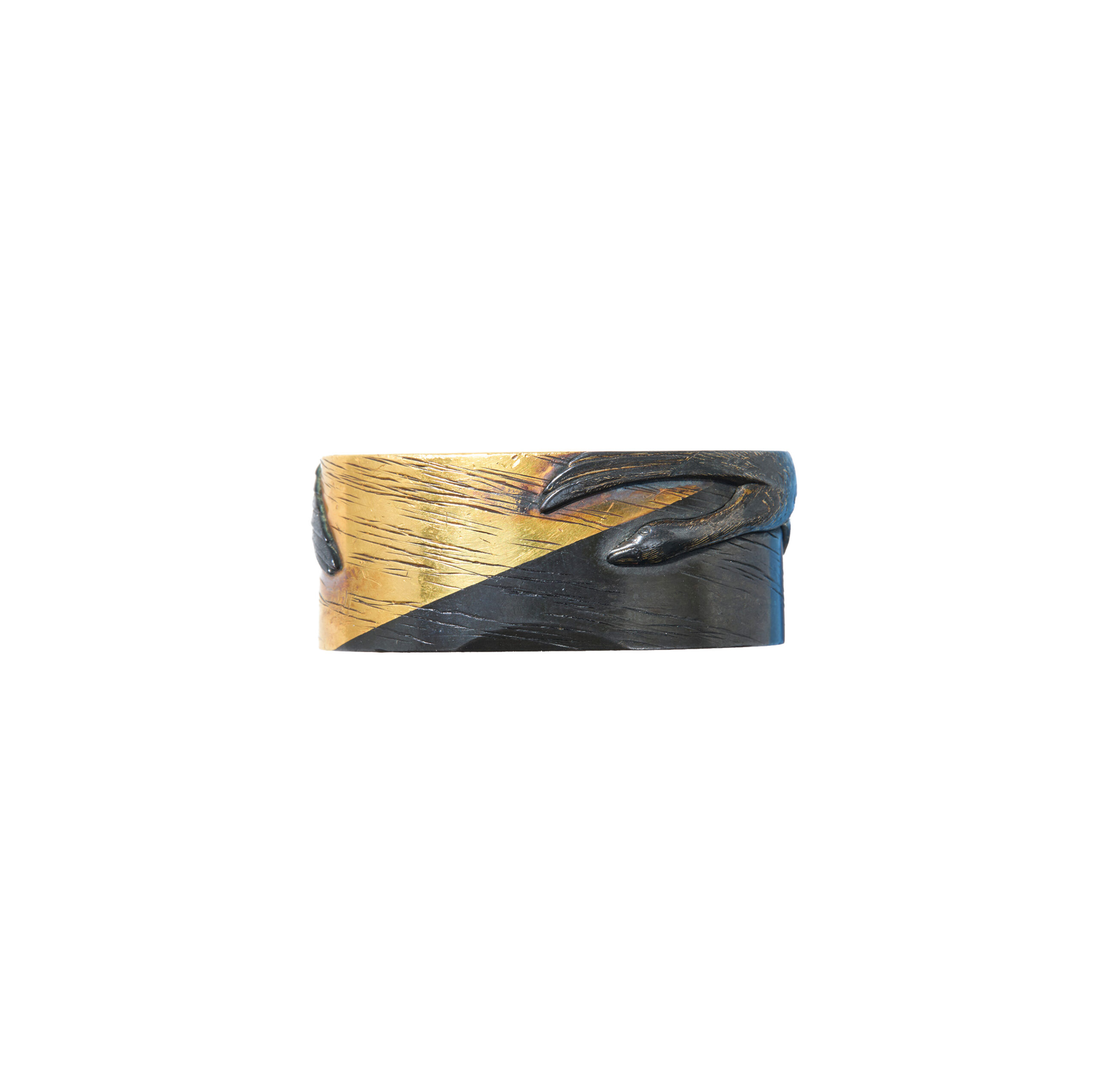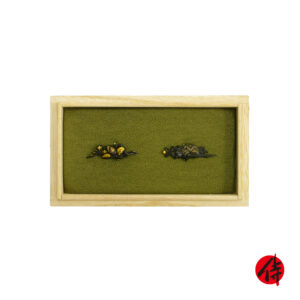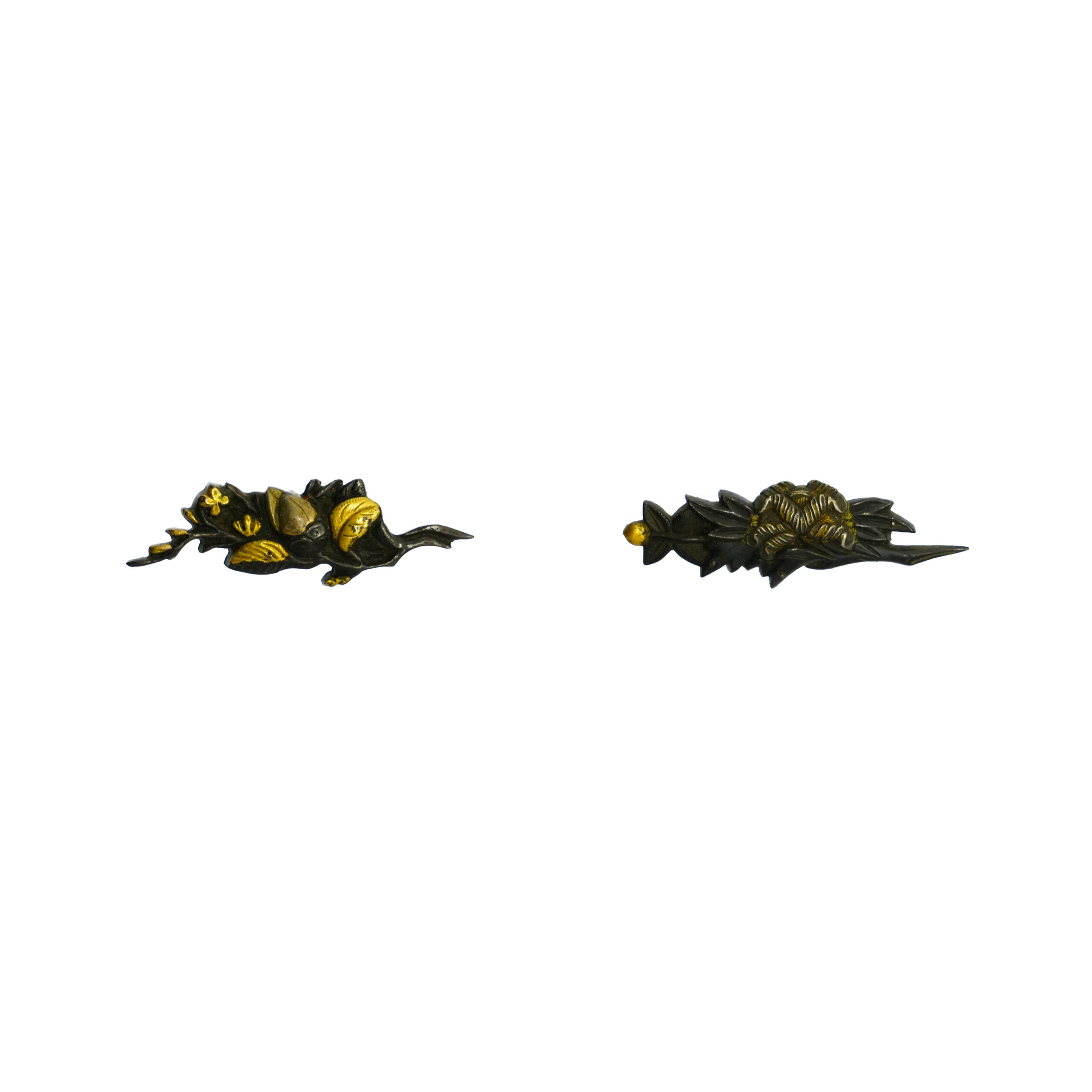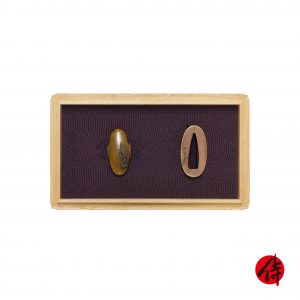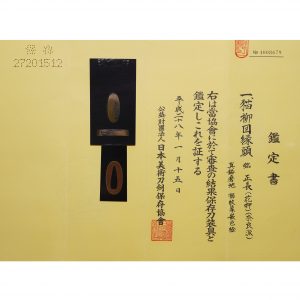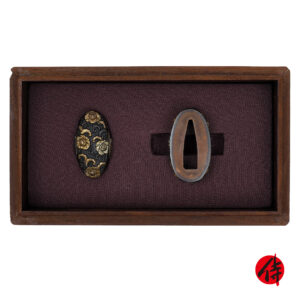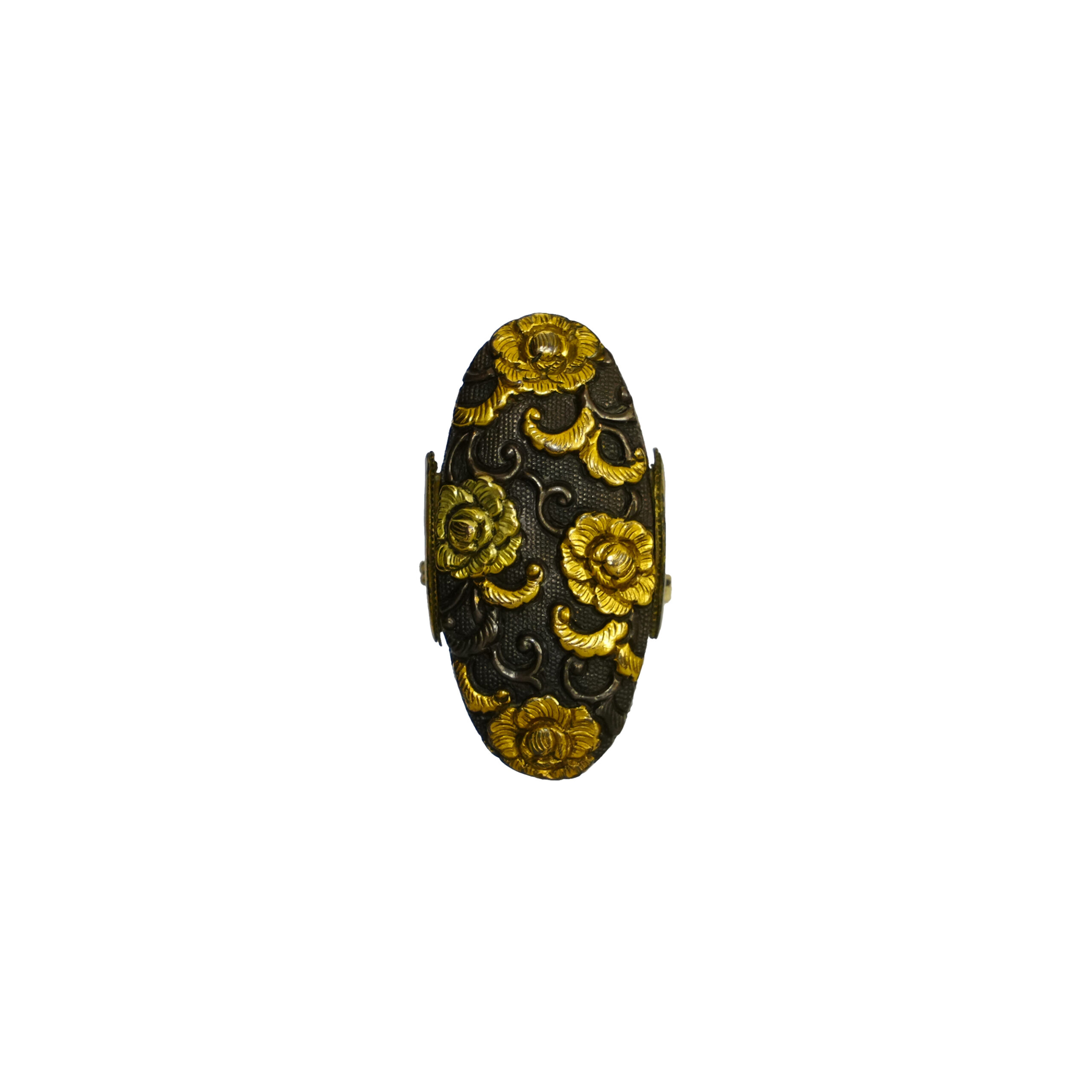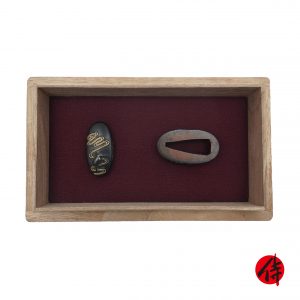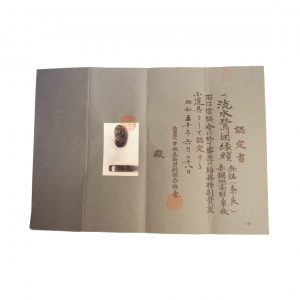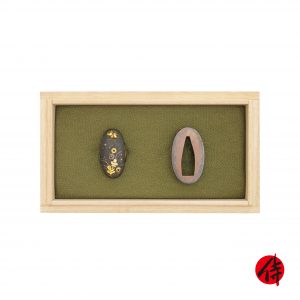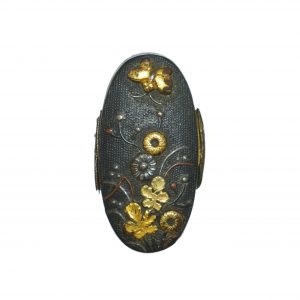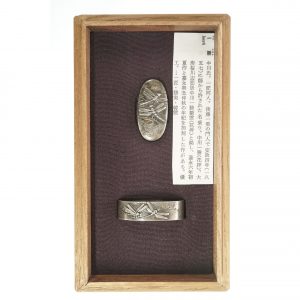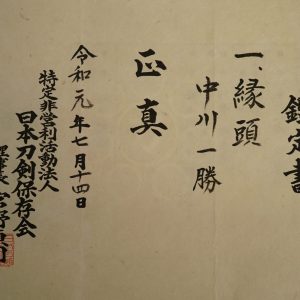Title: Tsuki ni Kari Zu
Description
This Fuchi Kashira is made from the Shibuichi (四分一). It is an alloy of copper and silver. It contains about 25% silver (a quarter of copper), which is why this alloy was named Shibuichi (it means quarter in Japanese). It is also called the Oborogin (朧銀) because it has a beautiful silver-gray color.
This Fuchi Kashira is recognized by The Society for the Preservation of Japanese Art Swords, which is known as NBTHK. According to the certificate, this Fuchi Kashira was made by Mitsunori (光則), who was active during the late Edo period. After the signature, there is a Kao (花押: stylized signature).
Mitsunori was a metalworker active during the Edo period, believed to be a member of the Murakami family and known by the name Seijirō. He initially signed his works as “Chikahisa” (仲矩), but later adopted the name “Mitsunori” (光則), under which he is more commonly known. While the details of his training and master remain unclear, he is associated with the Jochiku school (如竹派), a group of metal artists recognized for their refined craftsmanship and poetic aesthetic.
Mitsunori’s works often feature fine carving techniques, with motifs such as butterflies, insects, and natural scenes, rendered in shakudō (a copper-gold alloy) with nanako-ji (fish roe textured) ground. His engraved signature (kaō) and distinct floral carving style were highly appreciated by samurai and literati, and his pieces were praised for both technical precision and artistic expression.
According to historical records, he lived in Shinmonzen-chō, Edo (Today’s Tokyo), and was active well into his later years—some works bearing his signature confirm his age into his 80s. This longevity and consistent output suggest a lifelong dedication to his craft, earning him a respected place in the history of Japanese sword fittings.
Regarding the design of the fuchi-kashira, it features the motif “Tsuki ni Kari” (月に雁, Geese Flying Across the Moon), a classic and poetic theme in Japanese art. This motif evokes the feeling of seasonal change and the beauty of nature, often symbolizing autumn, solitude, and transience—themes deeply rooted in traditional Japanese aesthetics and literature. The graceful silhouette of wild geese flying across a full moon has long been admired as an elegant and emotionally resonant image, frequently seen in Edo-period sword fittings and paintings.
*As this item is an antique, please check each photo and ensure its condition.
What is Fuchi Kashira?
Fuchi Kashira is a kind of metal fitting of the Japanese sword, which improves the handle’s strength. Fuchi Kashira is a combination of two parts; Fuchi and Kashira. Fuchi was put next to Tsuba (hand-guard), and Kashira was put on the grip bottle. Fuchi Kashira had developed not only its practicality but also beauty for the decoration of the Japanese sword.
Why is it that the sword mounting was important for Samurai?
The sword mountings of the Japanese sword have many kinds of decorations such as handguards (Tsuba), sword hilt (Menuki), pommel (Fuchi Kashira). The Japanese sword worked as a weapon and as an object to show who he was. For example, it shows their personalities and beliefs. You could say that it is like decorations for smartphones today. We recommend you zoom in on the pictures of the sword fittings. When you do so, you can see the skill of Japanese metal engraving techniques. They are mainly made of iron and copper with inlays of gold, silver, and bronze. When it comes to handguard (Tsuba), each one has a different outline and weight. These sword fittings that have lived with Japanese swords of the same age might be worth as much as the Japanese swords. They are inconspicuous parts of the Japanese sword. Nevertheless, if you are knowledgeable or particular about it, you will become a connoisseur of the Samurai.

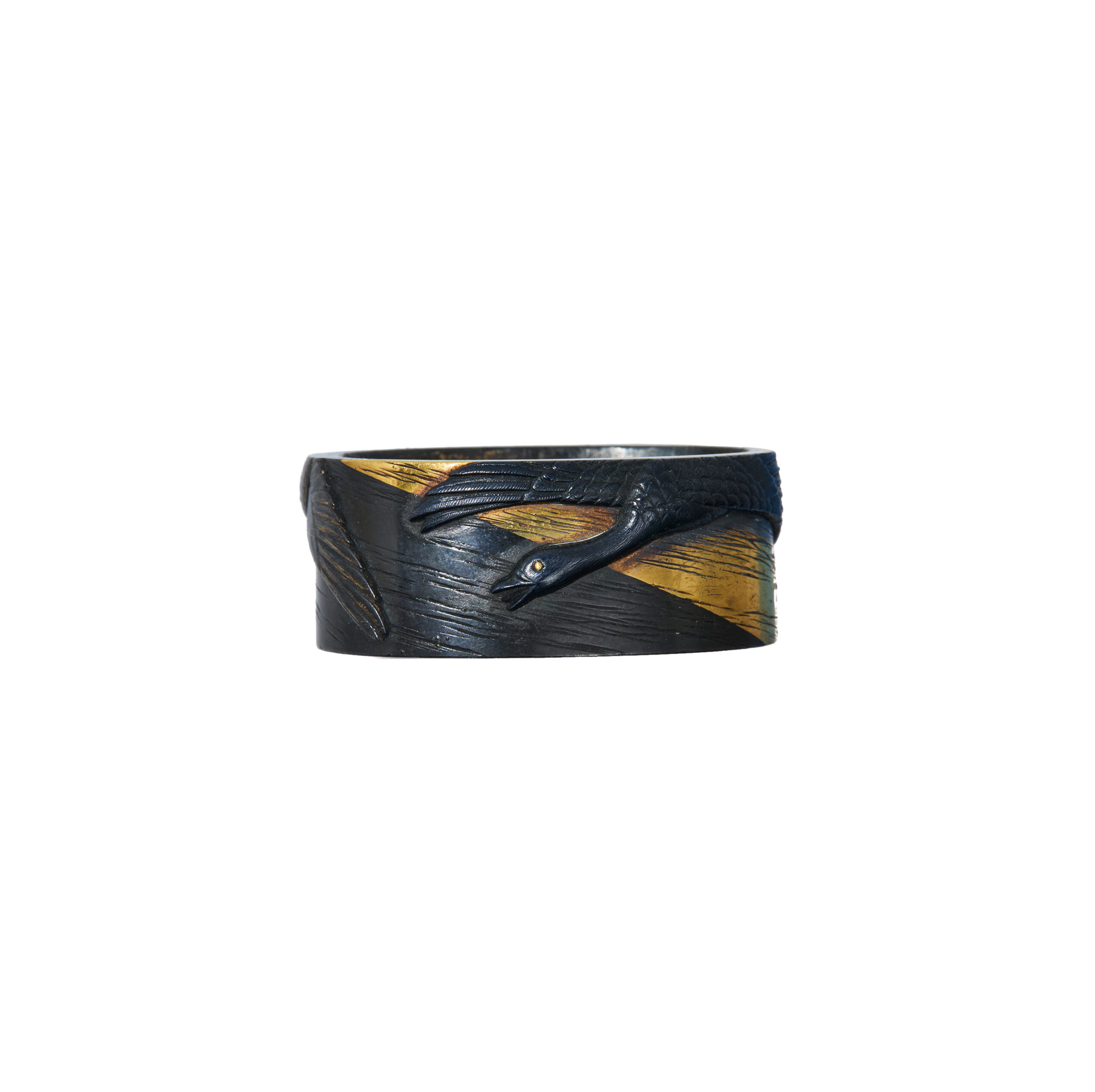
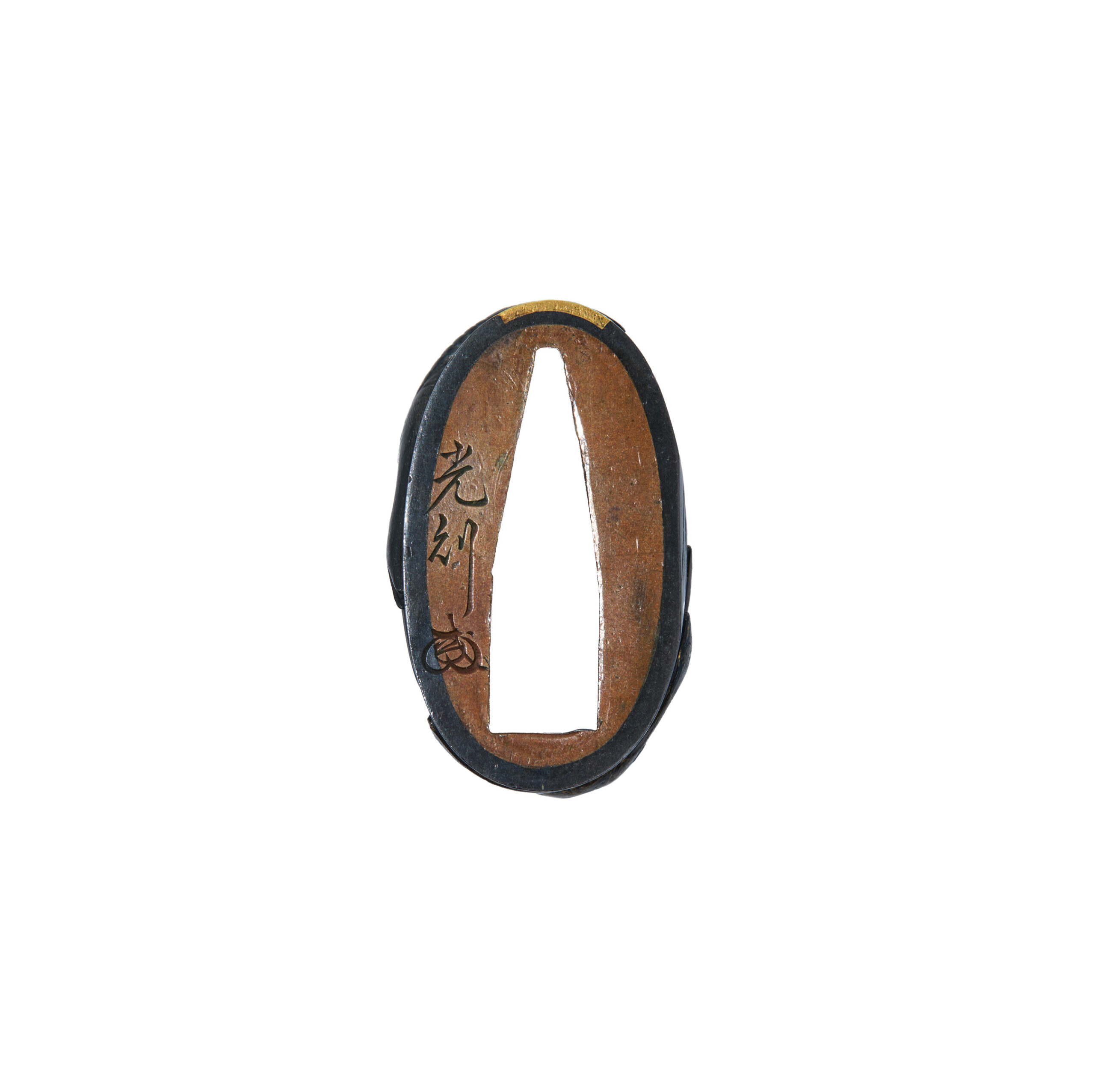
Authentication Paper: NBTHK Tokubetsu Hozon Certificate (No. 2007554)
NBTHK, also known as Nihon Bijutsu Touken Hozon Kyokai (the Society for the Preservation of the Japan Art Sword), is one of the oldest Japanese sword appraising organizations in modern-day Japan. They authenticated the Fuchi Kashira on July 14th in the 3rd year of Reiwa (2021). They appraised it as Tokubetsu Hozon Tousougu, the Fuchi Kashira worth preserving for Japanese society. The purchaser will receive this original certificate as well. We can also translate what is written into English and make a PDF file for your record if you request.
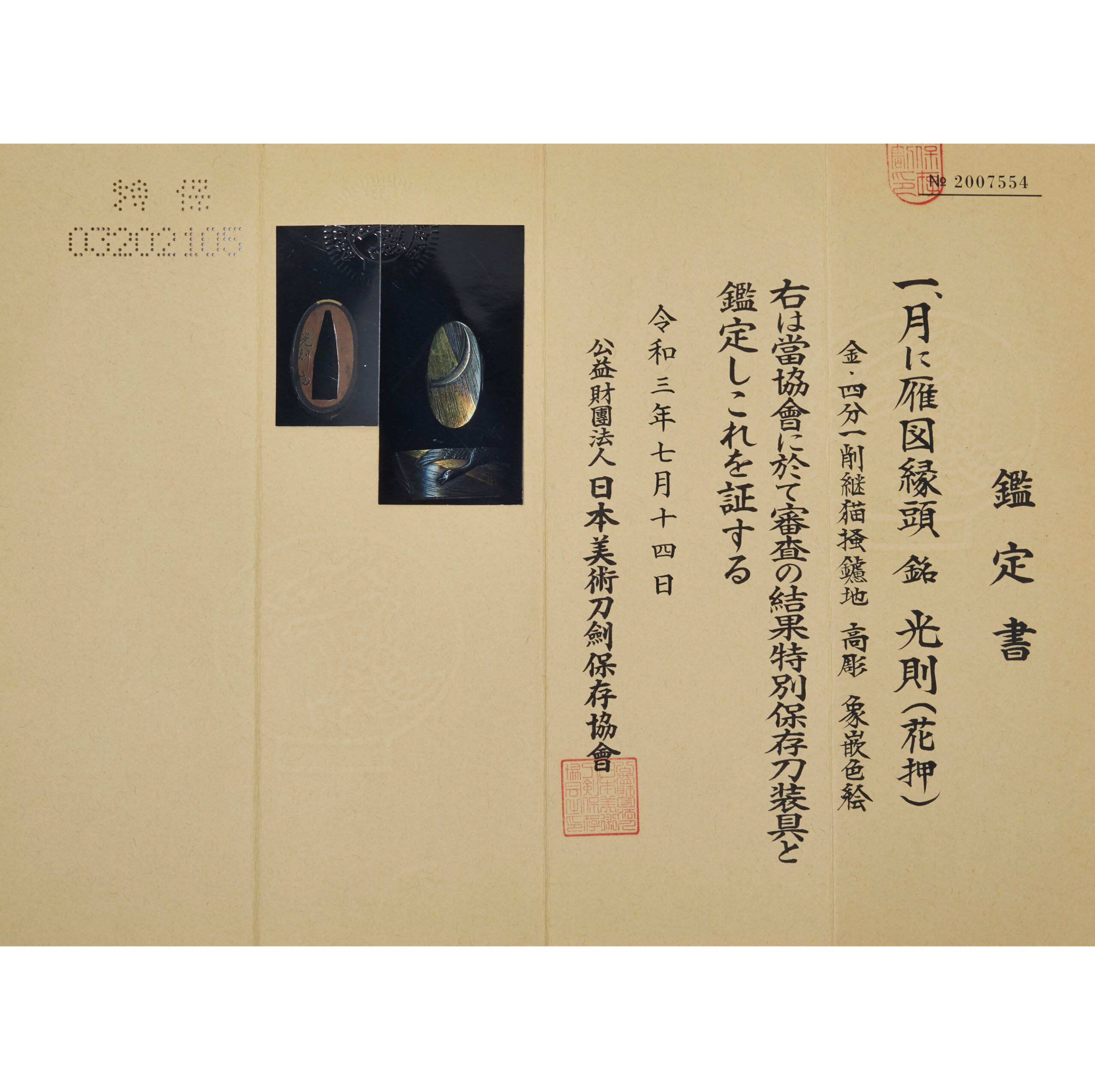
【About us】
Samurai Museum is located in Tokyo, Japan, exhibiting antique artifacts related to the Samurai history. Samurai Museum Shop is the place for those who are interested in Japanese culture and craftsmanship. We deal with antique Samurai swords/armor, traditional crafts made in Japan and so on.
【Payment method】
We accept payment through Stripe (Credit card), PayPal, Apple Pay or ChromePay, all of which are secure payment methods. Also, you don’t need to make an account on Stripe for the checkout. If you prefer other payment method, please contact us. You may either pay in JPY, USD, AUD, CAD, EUR, CHF or GBP. The price is set in Japanese Yen. Prices in other currencies are automatically calculated based on the latest exchange rate.

【Antique Japanese Fuchi Kashira and Export process】
After receiving the full payment from you, we will apply for its export permit from the Board of Education to legally export the Fuchi Kashira to other countries. It normally takes around 2 to 4 weeks to receive this permit. And we would like you to expect at least 1.0 – 1.5 months for your order to arrive at your given address after you ordered.
【Shipping duration】
We normally ship via EMS (Express Mail Service) provided by Japan Post. It usually takes at least 5-14 days to deliver the package after you place an order. Time of delivery is estimated as accurately as possible by the carrier but does not take into account any delays beyond our control such as by inclement weather, post office holiday seasons.
We offer Free International Shipping as long as we can ship your order by EMS. If you prefer other shipping carriers, please contact us.
We will inform you of the order’s tracking number via email. Please make sure you fill out your valid email address correctly.
*If you like to make sure if EMS shipping is available to your country, please contact us.

【How to make sure the condition】
Please keep in mind that what you are going to purchase is an antique item. We uploaded high resolution photos for you to check its condition thoroughly. If you like to see more photos with different angles, please feel free to contact us. We will be happy to send them to you so that you can make informed decision.
It is essential for us to know that you are happy with your choice of Fuchi Kashira and we are prepared to use the best of our ability to serve you.
Would you like see some more Fuchi Kashira for sale? Please check the link below. We hope you can find your favorite Fuchi Kashira.
https://www.samuraimuseum.jp/shop/product-category/decorations/fuchigashira/

